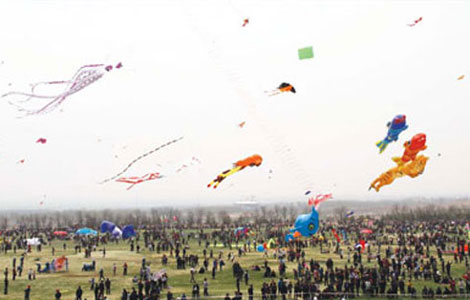America
Half of US population breathe polluted air: report
Updated: 2011-04-28 13:34
(Xinhua)
LOS ANGELES - Air pollution poses a threat to the health of about 154 million Americans - or more than half of the US population, the American Lung Association (ALA) said on Wednesday.
About 48 percent of US residents live in counties where smog (ozone) is too high, 20 percent live in areas where there are too many short-term spikes in pollution and six percent live in areas with harmful year-round soot (particle pollution), said the report.
About 17 million Americans live in areas afflicted by all three air pollution hazards, the report noted.
The report listed California as the most polluted state, where people are breathing some of the worst air.
Compared with other states, California has more polluted places, including Los Angeles, Long Beach, Riverside, Bakersfield and Fresno, the report said.
Honolulu in Hawaii and Santa Fe-Espanola in New Mexico are the only two cities in the nation that had no days in which smog and soot levels reached unhealthy ranges, making them the cleanest cities in the nation, said the report.
Research suggests air pollution threatens human health - and not just the lungs.
Small particles of pollution can lodge deep in the lungs, triggering an inflammatory process that, over time, can spread elsewhere in the body and damage blood vessels and the heart, according to Dr. Norman Edelman, the ALA's chief medical officer.
On days in which smog levels spike, there's an increase in hospital admissions for respiratory illnesses, heart attacks and stroke in the two or three days following it, said Michael Jerrett, a professor of environmental health sciences at University of California, Berkeley's School of Public Health.
In addition to posing both long-term and short-term risks, pollution can also contribute to low birth weights, diabetes, cardiovascular disease, heart attack, stroke and, ultimately, shorter life spans, he warned.
E-paper

Blowing in the wind
High-Flyers from around the world recently traveled to home of the kite for a very special event.
Preview of the coming issue
Image maker
Changing fortunes
Specials

Costly dream
Uninhabited havens up for lease but potential customers face wave of challenges in developing them.

Models gear up car sales
Beauty helps steer buyers as market accelerates.

Urban breathing space
City park at heart of Changchun positions itself as top tourism attraction




